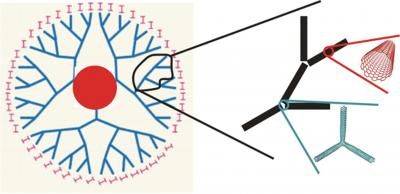New NanoMarkets Report States That Printed and Organic Sensor Market to Reach $2.3 Billion
The market for printed and organic sensors will reach $2.3 billion by 2015, according to a new study from NanoMarkets LC, an industry analyst firm based here. The report is the next in the firm's ongoing coverage of thin film, organic and printed electronics.
NanoMarkets believes that sensors represent an especially attractive opportunity for printed and organic electronics firms because unlike displays and RFIDs, printed and organic sensors are areas relatively underserved by existing manufacturers. In addition to their attractive price points, printed and organic sensors manufactured on flexible substrates provide the means for new markets to be developed in medical, architecture and construction, protective clothing, smart labels and packaging, robotics, aerospace, national defense and automotive applications.
Key findings of the report include:
- Environmental monitoring needs accurate and inexpensive long-term monitoring of environmental contaminants. Biosensors created with printed electrodes or organic transistors could offer an inexpensive solution and electronic noses using conductive polymers could provide real-time identification of contaminants. By 2015, environmental monitoring will be the largest single segment of the printed and organic sensor market at $925 million
- Genetic testing, forensics, pharmaceutical manufacture and a broad range of academic disciplines have exploded following the completion of the Humane Genome Project. As a result there is a surging demand for microarrays and biochips, which are expected to reach $413 million by 2015. Agilent is already inkjet printing all of its microarrays.
- The lowered costs associated with printing and organic electronics is also accelerating the trend towards replacing expensive centralized diagnostic equipment with lower cost point-of-care and home testing. Biosensors are a major part of the trend as are printed touch sensors which can be used to diagnose muscular and bone diseases. By 2015 the printed/organic medical diagnostic and therapeutic sensor market (microarrays and biochips excluded) will reach $414 million.
- Smart textiles offer considerable potential for sensors. Applications include garments that adapt to changing temperature and body suits that monitor human physiological state and communicate to a central system. Smart fabrics would better allow the military to communicate, respond to emergencies and achieve informational and situational awareness advantages. The value of printed and organic sensors used in smart textiles is expected to reach $226 million by 2015.
Topics
Organizations
Other news from the department business & finance
These products might interest you

Octet R2 / Octet R4 / Octet R8 by Sartorius
Full power on 2, 4 or 8 channels: Label-free and GxP-compliant analysis of molecular interactions
Innovative label-free real-time protein quantification, binding kinetics and rapid screenings

Octet RH16 and RH96 by Sartorius
Efficient protein analysis for process optimisation and manufacturing control in high-throughput
Label-free protein quantification and characterization of protein-protein interactions

Octet SF3 by Sartorius
Surface Plasmon Resonance (SPR) using Single Dynamic Injections for Kinetics and Affinities
Curvature is Key - Adding a ‘Third Dimension’ to the Binding Curve

Get the analytics and lab tech industry in your inbox
By submitting this form you agree that LUMITOS AG will send you the newsletter(s) selected above by email. Your data will not be passed on to third parties. Your data will be stored and processed in accordance with our data protection regulations. LUMITOS may contact you by email for the purpose of advertising or market and opinion surveys. You can revoke your consent at any time without giving reasons to LUMITOS AG, Ernst-Augustin-Str. 2, 12489 Berlin, Germany or by e-mail at revoke@lumitos.com with effect for the future. In addition, each email contains a link to unsubscribe from the corresponding newsletter.



























































